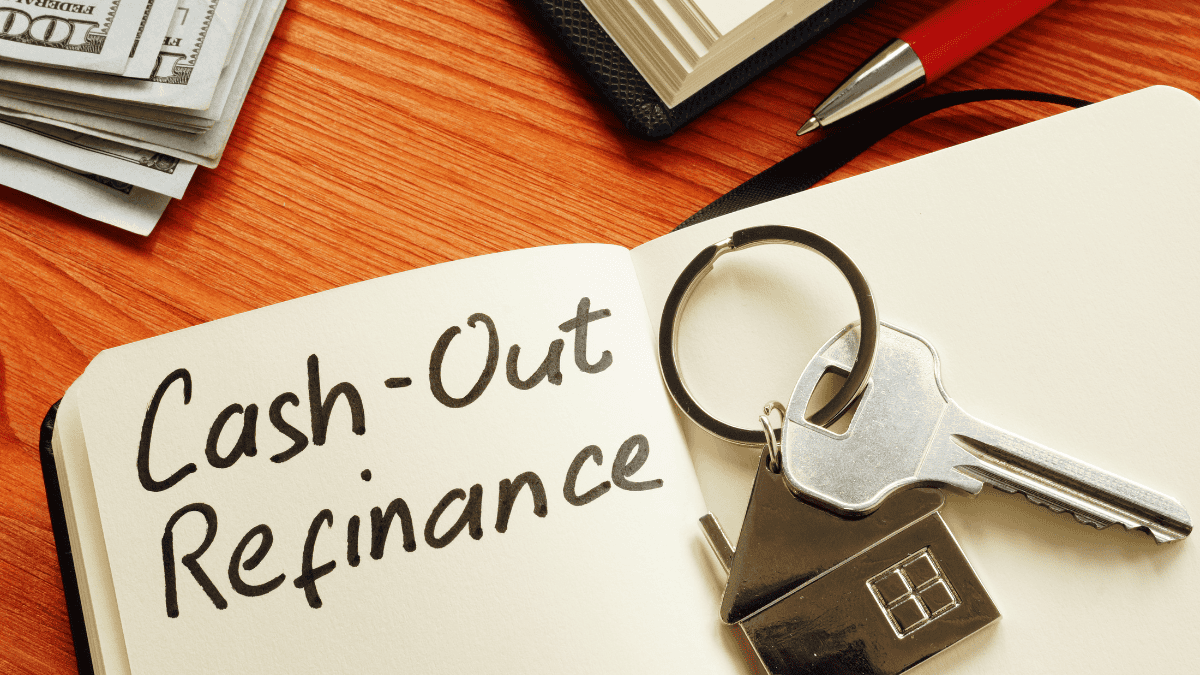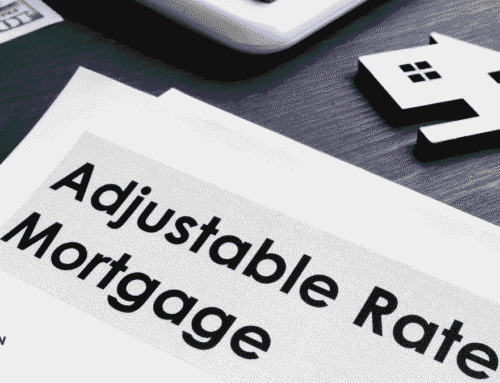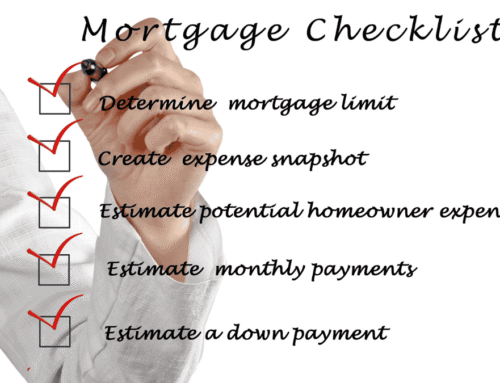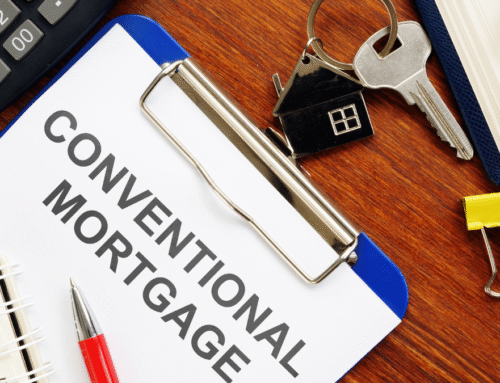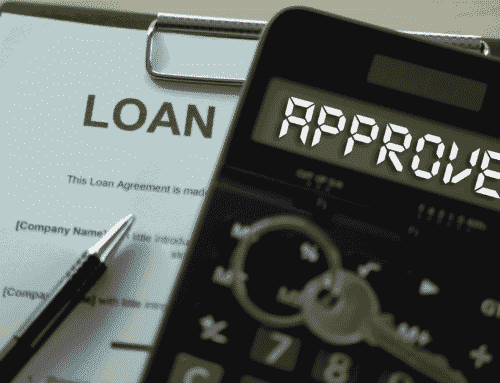DSCR Cash Out Refinance Guide (2025): Calculator, Rates, LTV & Seasoning
DSCR Refinance in 2025: Use my Free DSCR Cash Out Refinance Calculator and Get the Best Deal
Updated:
I’ve used DSCR loans to build and scale a 120+ door rental portfolio in the U.S. A DSCR cash-out refinance has been a core part of my playbook—pulling equity from my existing rentals to fund deposits on new acquisitions and value-add projects.
In this guide, I’ll show you how a DSCR refinance works, what affects DSCR refinance rates, typical LTV and seasoning rules (including “no-seasoning” paths), and the exact documents you’ll need to prep for fast approval in 2025. I hope you find this useful.
What Is a DSCR Cash Out Refinance?
A DSCR cash-out refinance lets you pull equity from an investment property. Like other DSCR loans, a DSCR refinance uses the property’s cash flow (Debt Service Coverage Ratio)—not your personal income or tax returns—to qualify. There are two main types of DSCR refinance:
- Cash-out refi: Tap into the equity in your existing rental property up to the program’s LTV cap (if the DSCR supports the new payment).
- Rate-and-term refi: Improve your current rate/term with little or no cash back; typically prices better than a cash-out loan.
I use DSCR loans for both purchases and refinancing because my taxable income is very low (real estate income is very tax-efficient). These loans also work well for my clients as most of them are non-U.S. citizens without U.S. income or credit, so DSCR loans are pretty much the perfect product for those guys.
I also use DSCR cash out refinance loan when I’ve bought a property using a hard money loan and completed some renovations. Both can be a useful tool, depending on the deal. See DSCR loan vs hard money loan.
Quick tip: Your max cash-out is limited by both LTV and DSCR. If numbers are tight, you might consider improving your DSCR by increasing rents, using an interest-only structure, choosing an ARM with a lower initial fixed rate, or buying down the rate with points. The higher the DSCR, the better your rate. Use my DSCR calculator to model scenarios before you apply.
Note: DSCR loans are business-purpose financing for investment property (not owner-occupied). Program terms vary by lender and state. Short-term rentals and 2–4 units are widely supported; options for 5+ units exist with specialized programs. I’ll cover rates & pricing drivers, seasoning rules, and how to calculate max cash-out next.
Current DSCR Cash-Out Refinance Rates & Pricing Drivers
DSCR cash-out refinance rates change with market conditions, lender risk tiers, and how your deal is structured. Cash-out loans typically price ~0.25%–0.50% higher than rate-and-term DSCR refis (and purchase loans). Some programs also have lower LTVs than rate/term refis and purchase loans. Also, interest rates vary between fixed vs ARM DSCR loans, so make sure you choose the right tool for the job.
For context, I recently (August 2025) refinanced one of my own rental properties in Kansas City with a 30-year fixed rate DSCR cash out refinance loan (75% LTV). We got a rate of 7%, which is pretty good considering I’m not a U.S. citizen. I managed to pull $50,000 in equity out of the property after 5 years of ownership.
For live DSCR loan rate ranges and more information on how pricing is built, and up to date current DSCR rates, see my DSCR rates guide (updated weekly), or join my VIP Priority investor List below.
| Factor | Typical Impact |
|---|---|
| Cash-out vs Rate-and-Term | Cash-out often carries a pricing premium and/or lower max LTV versus rate-and-term. |
| DSCR Tier | Higher DSCR (e.g., ≥1.20–1.25×) tends to price better; near-breakeven DSCR may see surcharges or tighter terms. |
| LTV Band | Lower LTV bands (e.g., ≤65–70%) usually price better than top-band cash-out (e.g., 70–75%). |
| Fixed vs ARM | ARMs (e.g., 5/6, 7/6, 10/6) often start lower than 30-year fixed; the rate can adjust periodically thereafter. |
| Interest-Only (IO) | IO improves cash flow/DSCR but usually adds a pricing premium versus fully amortizing (often ~0.25%+). |
| Prepayment Structure | Longer step-downs (e.g., 5-4-3-2-1) can improve rate relative to shorter/no prepay—match to your exit plan. |
| Property Type | STRs/condos/2–4 units are common; some 5+ options exist. Higher-complexity assets may price higher. |
| Loan Size & Credit | Very small or jumbo balances, and weaker credit tiers, can add to price; mid-range often prices best (e.g., ~$100k–$350k). |
| Foreign Nationals | Foreign-national DSCR loans often require extra reserves and documentation; KYC/OFAC checks are typical. Pricing can include an overlay of ~0.25%–1.00%. |
Buydown math (quick check): Break-even months ≈ points cost ÷ monthly payment savings. Example: paying 1 point ($3,000) to save $45/month breaks even in ~67 months. If you plan to hold longer than break-even (and prepay allows), buying points can make sense.
Lock strategy: Get quotes from 2–3 DSCR lenders on the same day, compare prepayment options, and model ARM vs fixed and IO vs amortizing in my DSCR calculator. For junk-fee and prepay traps, see my red flags guide.
JOIN MY VIP PRIORITY INVESTOR LIST
Get the Best DSCR Loan Deals and Off-Market DSCR-Ready Investment Properties in Your Inbox Every WeekYES! ADD ME TO THE PRIORITY INVESTOR LIST
DSCR Cash-Out vs Rate-Term Refinance (Key Differences)
Both options use the property’s cash flow (DSCR) instead of your personal W-2s or U.S. tax returns (or foreign income for overseas investors). The right choice depends on whether you need equity today or a to improve your cashflow for the long run.
| Feature | Cash-Out Refi | Rate-and-Term Refi | Why it Matters |
|---|---|---|---|
| Primary purpose | Pull equity for acquisitions, rehab, reserves, partner buyout. | Reduce rate, switch term, or move to fixed/ARM/IO without major cash back. | Aligns loan structure with your current strategy. |
| Typical rate impact | Usually prices higher (often ~0.25%–0.50% premium). | Generally lower pricing than cash-out. | Small rate deltas compound over long-term holds. |
| Max LTV | Often capped lower (e.g., ~70–75%). | Can allow higher LTV than cash-out, program dependent. | Sets ceiling on how much equity you can access. |
| DSCR sensitivity | More sensitive—higher DSCR helps unlock max cash-out. | Sensitive, but easier to qualify at same payment level. | Underwriting hinges on rents vs new PITIA. |
| Seasoning | Some lenders require longer title/value seasoning; early/no-seasoning exists with tighter caps. | Seasoning still applies but is often simpler. | Impacts timeline and valuation basis. |
| Appraisal basis | Standard appraisal; STRs may need market-rent or STR addenda. | Same; easier if improving rate/term only. | Income method can affect DSCR and loan size. |
| Prepayment | Step-downs common (e.g., 5-4-3-2-1); longer prepay can improve price. | Step-downs common; options may be more flexible. | Match prepay to your planned exit or refi timeline. |
| Docs focus | Entity/ID, reserves, payoff, appraisal, rent docs; use-of-proceeds is business-purpose. | Similar, but fewer cash-out checks. | Clean files move fastest through underwriting. |
| Best for | Scaling, BRRRR-style recycling, funding capex on STRs/2–4 units, consolidating higher-cost debt. | Lowering payment, switching to fixed/ARM/IO, optimizing DSCR for future deals. | Choose based on cash needs vs payment optimization. |
Quick Decision Guide:
Pick Cash-Out if you need funds for the next deal, rehab, or reserves and your DSCR comfortably supports the higher balance.
Pick Rate-and-Term if your goal is a lower payment, or switching loan structures (e.g., ARM → fixed, interest only) without tapping into your equity.
Next steps: Model both paths in my DSCR calculator, compare quotes from 2–3 lenders on the same day, and review prepayment language to avoid nasty surprises. See my red flags guide for more info on some of the things you need to watch out for.
DSCR Cash-Out Refinance Requirements (LTV, DSCR, Reserves)
There are thousands of private lenders/brokers offering DSCR programs in the U.S., and requirements vary by lender, program, borrower/deal specifics, and state. That said, most DSCR cash-out refinance files follow the broad patterns below. Knowing these in advance will help you underwrite a target rental before going for a pre-approval, so you can secure the best term possible.
| Factor | Typical Range / Notes |
|---|---|
| Max LTV (Cash-Out) | ~70–75% common; may be lower based on DSCR tier, property type (e.g., condo/STR), loan size, and seasoning. |
| DSCR Threshold | ~1.15–1.25×+ often targeted; stronger DSCR improves pricing and can maximize net cash proceeds. |
| Credit / Trade Lines | Broad approval bands around ~620–700+; stronger credit = better pricing. Foreign nationals may not need U.S. credit, but overlays can apply. |
| Reserves | ~6–12 months PITIA typical; higher for STRs, 5+ units, jumbo balances, or foreign-national files. |
| Seasoning | Title/value seasoning commonly 3–12 months; “no-seasoning” paths exist with tighter caps and cost-basis limits (details next). |
| Property Types | 1–4 units (SFR/condo/townhome) widely supported; STRs allowed with program-specific underwriting; select options exist for 5+ units. |
| Income Method | Market rents (1007) vs. lease; STRs may require an STR addendum or documented bookings/ADR depending on lender policy. |
| Entity / Title | LLC vesting commonly allowed with a personal guarantee; ensure EIN, operating agreement, and state registration align with title. |
Foreign investors: Expect KYC/OFAC checks, passport/visa, and funds seasoning (e.g., 60–90 days) with documented source of funds. A U.S. bank account simplifies closing logistics and reserve verification. learn more in my article: Can Foreigners Buy Property in the USA
Fast-approval checklist: Entity docs (LLC + EIN), ID/passport, insurance, current payoff statement, 12-month mortgage history, lease or market-rent support (1007 appraisal), STR evidence if applicable, seasoned reserve statements, and appraisal access. For a complete list, use my DSCR pre-approval checklist.
If your DSCR is tight, improve the ratio before you lock, raise rents where possible, consider interest-only, evaluate a 5/6 ARM with a lower start rate, or buy down points. I walk through my own DSCR improvement tactics in How to Improve Your DSCR.
Note: DSCR loans are business-purpose financing for investment property (not owner-occupied). Requirements and overlays vary by lender and market conditions.
JOIN MY VIP PRIORITY INVESTOR LIST
Get the Best DSCR Loan Deals and Off-Market DSCR-Ready Investment Properties in Your Inbox Every WeekYES! ADD ME TO THE PRIORITY INVESTOR LIST
Seasoning Rules & “No-Seasoning” Options for DSCR Cash-Out Refinance Loans
Seasoning refers to how long you’ve held title and whether a lender will use today’s appraised value (AV) or limit you to your cost basis on a DSCR cash-out refinance. For clarity, cost basis typically means purchase price + eligible closing costs + documented rehab (per lender policy). Policies vary by lender and state, but the patterns below help you plan your timeline and set realistic LTV expectations.
In my experience, most lenders want ~6-12 months of ownership seasoning before they’ll consider an AV-based DSCR cash-out refinance. Some lenders will refi earlier, but terms are usually tighter (lower LTV, higher pricing). Time and planning are your friends! If you need capital sooner, consider a second-position bridge instead of a full refi.
Definitions: Title/ownership seasoning = time on title. Value seasoning = whether the lender will use current appraised value vs your cost basis. “No-seasoning” offers often mean cost-basis limits and tighter LTVs, not unrestricted AV cash-out.
| Time Since Purchase | Valuation Basis | Typical Max LTV (Cash-Out) | What to Expect |
|---|---|---|---|
| 0–3 months | Usually cost basis | ~60–70% of cost basis | True AV cash-out is rare; occasional “delayed financing”-style exceptions for business-purpose deals with strict docs and caps. |
| 3–6 months | Mixed: cost basis or AV (program-dependent) | ~65–70% (often tighter for early refis) | AV may be allowed after substantial, documented rehab; many lenders still restrict to cost basis or add pricing overlays. |
| 6–12 months | More likely AV | ~70–75% (if DSCR supports) | Common window for AV-based cash-out; stronger DSCR and clean files improve pricing and proceeds. |
| 12+ months | Standard AV | ~70–75% (program maximums) | Best shot at top-band LTV/pricing, subject to DSCR tier, property type (STR/condo), and prepay selection. |
Quick decision guide:
- Need cash < 3 months? Accept cost-basis caps, use a bridge/second, or wait.
- 3–6 months: Shop early-AV programs; expect lower LTVs and higher pricing.
- 6–12+ months: Target AV cash-out with stronger DSCR to maximize proceeds. Model scenarios in my DSCR calculator.
- Documents lenders look for: final settlement/HUD, deed, rehab invoices/contracts, proof of payment (bank/escrow statements), before/after photos, lease or 1007 market-rent support (STR addendum or booking history if applicable).
- Common traps: “no-seasoning” offers that still limit to cost basis, entity/title transfers that reset seasoning clocks, and early refis with steep prepay penalties. See my red flags guide.
Note: Caps and timelines vary by lender and state. DSCR loans are business-purpose financing for investment property; policies for condos, STRs, 2–4 units, and 5+ units can differ.
How to Calculate Your Maximum Cash-Out on a DCSR Cash Out Refinance Loan
We all (usually) want to pull as much cash out of our rental properties as possible, while still having them cash flow well. Your DSCR cash-out refinance is limited by two ceilings: LTV and DSCR support. Calculate both, and take the lower result. Then, subtract your payoff and closing costs to estimate net cash to you.
Quick formula (step-by-step):
- LTV cap loan: Appraised Value × Max LTV.
- DSCR cap loan:
- Max PITIA = Qualifying Rent ÷ DSCR threshold (e.g., 1.20).
- Max P&I = Max PITIA − Taxes/Insurance/HOA.
- Convert Max P&I to a loan amount using your quoted rate/term (or IO formula).
- Max loan = min(LTV cap loan, DSCR cap loan).
- Estimated net cash: Max loan − Current payoff − Closing costs/points.
Tip: Model scenarios (fixed vs 5/6 ARM, interest-only vs amortizing, points buydown) in my DSCR calculator before you lock.
| Inputs | Value |
|---|---|
| Appraised Value | $400,000 |
| Max LTV (Cash-Out) | 75% → LTV cap loan = $300,000 |
| Qualifying Rent (lease or 1007) | $2,800/mo |
| DSCR Threshold | 1.20× → Max PITIA = $2,800 ÷ 1.20 = $2,333.33 |
| Taxes/Insurance/HOA | $400/mo → Max P&I = $2,333.33 − $400 = $1,933.33 |
| Current Payoff | $220,000 |
| Est. Costs/Points | $9,000 |
| Structure | Rate/Term Assumption | DSCR Cap Loan | LTV Cap Loan | Max Loan | Est. Net Cash |
|---|---|---|---|---|---|
| 30-yr Fixed (Amortizing) | 7.50% / 30 yrs | ≈ $276,500 (from $1,933.33 P&I) | $300,000 | ≈ $276,500 | ≈ $276,500 − $220,000 − $9,000 = $47,500 |
| Interest-Only (IO) | 7.75% IO (10-yr IO on 30-yr term) | ≈ $299,350 (IO payment = $1,933.33) | $300,000 | ≈ $299,350 | ≈ $299,350 − $220,000 − $9,000 = $70,350 |
Takeaway: The amortizing structure is DSCR-capped (~$276.5k), while IO nearly reaches the LTV cap (~$300k). IO improved net cash by roughly $22.8k in this example—useful when you need more proceeds and your DSCR is tight.
Reality checks: Your “Current Payoff” may include a prepayment penalty on your existing loan; closing costs can include title/escrows/points; and some lenders require seasoned reserves even after closing. Always confirm cash-out use is business-purpose.
Note: Numbers are illustrative. LTV caps, DSCR thresholds, and pricing vary by lender, program, property type (STR/condo/2–4/5+), and state. For live ranges, see my DSCR rates guide.
DSCR Cash-Out Refinance Calculator
You can save some time and use my free DSCR cash our refinance calculator below. Just input the fields, and it’ll tell you everything you need to know!
DSCR Cash-Out Refinance Calculator
ARMs (5/6), Interest-Only & Prepayment Penalties
When it comes to cash out refinancing, structure matters! Both for pricing and for approval. ARMs and interest-only (IO) can lower the PITIA payment and improve your DSCR, which may increase the amount of equity you can pull out on a DSCR cash-out refinance. Of course, nothing is for free, and the trade-off is future rate risk and (often) higher prepayment penalties.
The type of loan structure I choose for any given refinance will be guided by my specific plan for that property. For example, if I think that I might sell or refinance again within 5 years, then a loan with 5-year prepay penalty might not be a good idea. My personal goal is to hold my properties for as long as possible, and either pay down as much debt as I can, then sell, or to hold the property forever and maximize the net cashflow. Depending on which it is, I will choose the most appropriate tool for the job. You should also consider DSCR vs conventional loans if your borrower profile supports a full-doc application.
| Option | How It Prices | Payment Behavior | Best When | Key Risks |
|---|---|---|---|---|
| 30-yr Fixed (Amortizing) | Usually higher start rate than ARM. | Level P&I for full term. | Long holds; you value certainty. | Higher payment can reduce DSCR and proceeds. |
| 5/6, 7/6, 10/6 ARM | Typically lower start rate than fixed. | Fixed for 5/7/10 yrs, then adjusts every 6 months (often SOFR + margin with caps). | Medium holds or planned refi/sale before resets. | Reset risk; payment can increase post-fix period. |
| Interest-Only (IO) | Small pricing premium vs amortizing is common. | IO for 5–10 yrs, then amortizes; lowest payment during IO. | DSCR is tight and you need more proceeds/cash flow. | Balance doesn’t amortize during IO; later payment jump. |
| Structure | Typical Pattern | Notes |
|---|---|---|
| Step-down | 5-4-3-2-1 (60 months) or 3-2-1 | Often allows ~20% principal curtailment per year without penalty. |
| No-prepay option | 0% from day one | Usually adds a rate premium; confirm it’s truly 0% on sale/refi. |
| Make-whole / Minimum-interest | Hard prepay period (e.g., 12–24 months) | Less common; read language carefully. It can be expensive to exit early. |
How I choose: If DSCR is tight, I might us an ARM or interest only DSCR loans to maximize my DSCR (and therefore potential equity pull). Then I’ll weigh the prepay against my exit plan. If I expect to keep the asset long term (mostly this is true), I compare the ARM start rate to a 30-yr fixed and model break-even.
Note: ARM indices (often SOFR)
Foreign Investor Playbook: DSCR Cash-Out Refinance (Non-U.S. Borrowers)
Good news! Because DSCR underwriting focuses on the property’s cash flow, not personal income, this makes it a great fit for non-U.S. investors. I’m a non-US citizen, and I use DSCR loans for all my US rental properties. Also, most of my clients are also non-resident foreigners buying rental properties in the USA, and we use DSCR loans for about 70% of our acquisitions.
Expect a few overlays (KYC/OFAC, reserves, documentation) and plan ahead for funds seasoning, entity vesting, and closing logistics.
| Factor | Typical Range / Notes |
|---|---|
| Max LTV (Cash-Out) | ~65–75% depending on DSCR tier, property type (STR/condo/2–4/5+), and seasoning. Cash-out usually caps lower than rate-and-term. |
| DSCR Threshold | ~1.15–1.25×+ common; stronger DSCR improves pricing and proceeds. See max cash-out math. |
| Rate Overlay | ~0.25%–1.00% typical foreign-national uplift (program-dependent). Compare quotes same-day—see rates & drivers. |
| Reserves | ~6–12 months PITIA; higher for STRs, 5+, jumbo balances, or early-seasoning files. Funds generally must be seasoned (e.g., 60–90 days). |
| ID & Docs | Passport/visa, proof of address, entity docs (LLC + EIN), source-of-funds trail, bank statements. Certified translations where applicable. |
| Credit | U.S. credit often not required; alternatives include international credit files, landlord trade, or bank reference letters (lender policy). |
| Title / Vesting | LLC vesting commonly allowed with personal guarantee; align operating agreement, EIN, and state registration with title early. |
| Income Method | Lease or 1007 market rent; STRs may require STR addendum or booking evidence. Appraisal method can change DSCR outcome. |
| Banking | U.S. bank account strongly recommended for closing funds, reserves verification, and smooth payment setup. |
What to prep before you request quotes
- Entity docs: LLC articles & operating agreement, EIN letter, signers’ passports/visas.
- Funds trail: last 2–3 months statements showing down payment/reserves; document source of funds.
- Property file: lease (or market-rent 1007), insurance quote, tax bill/estimate, HOA (if any).
- Payoff & prepay: current payoff statement and prepayment details (see prepayment section).
- Valuation plan: understand whether you qualify for AV vs cost-basis—see seasoning rules.
Currency & transfers: Confirm wire timelines, FX spreads, and any bank compliance holds. Pad your closing calendar—international wires and KYC reviews can add days.
Tax & reporting (not advice): Speak with a cross-border CPA on FIRPTA, depreciation, and treaty implications. If you use an LLC, align your entity and banking footprint with your long-term strategy.
Next reads for foreign investors: Deep dive the nuances in my Foreign-National DSCR Guide and the broader Foreign National Mortgage Guide. Price your deal with the DSCR Rates Guide, and model scenarios in the DSCR Calculator. For lender shopping, start here: Best DSCR Lenders.
Note: Policies differ by lender and state. DSCR loans are business-purpose financing (investment property only). Always verify overlays at term sheet and lock.
Getting Started: Next Steps
Ready to explore a DSCR cash-out refinance? Here’s the shortest path to a solid approval and the best pricing you can realistically achieve right now.
Your 6-Step Action Plan
- Run the numbers. Price scenarios (fixed vs 5/6 ARM, amortizing vs IO) and test DSCR limits with my on-page calculator and the full DSCR calculator suite.
- Check today’s ranges. Review current drivers and typical bands in the Rates & Pricing section; skim my live DSCR Rates Guide.
- Assemble your file. Use the DSCR Pre-Approval Checklist (ID, entity docs, payoff, insurance, lease/1007, reserves).
- Mind seasoning & valuation. Confirm whether your refi qualifies for appraised value vs cost basis (see Seasoning Rules)—this determines realistic max cash-out.
- Get 2–3 quotes on the same day. Standardize inputs (LTV, DSCR threshold, prepay, IO) to compare apples-to-apples. Shortlist lenders from Best DSCR Lenders.
- Lock with intent. Match prepayment to your exit plan (see ARMs, IO & Prepay). Verify the lock sheet, prepayment addendum, and closing costs before you sign.
Note: DSCR loans are business-purpose financing for investment property (including STRs and 2–4 units; select programs for 5+). Policies and pricing vary by lender and state. This content is educational—verify terms on your written loan estimate and lock sheet.
GET PRE-APPROVED FOR THE BEST DSCR LOAN RATE
Start your real estate investment journey today, and get pre-approved for the Best DSCR Loan Interest Rates from market leading lenders!
“Having personally invested in over 120 US rental properties from overseas, I know the true value of getting the right advice and support.
David Garner – Cashflow Rentals

GET PRE-APPROVED FOR THE BEST DSCR LOAN INTEREST RATES TODAY!
Start your real estate investment journey today get pre-approved for the best DSCR loan interest rates from market leading lenders!
“Having personally invested in over 120 US rental properties from overseas, I know the true value of getting the right advice and support.
David Garner – Cashflow Rentals
DSCR Cash-Out Refinance FAQs
How does a DSCR cash-out refinance work?
A DSCR cash-out refinance lets you pull equity from an investment property based on the property’s cash flow—not your W-2s or U.S. tax returns. Lenders underwrite primarily on rents versus the new PITIA payment, using a minimum DSCR threshold. These are business-purpose loans for rental property, including STRs and 2–4 units; select programs also support 5+ units.
What are the typical max LTV and DSCR to qualify?
Typical cash-out caps land around ~70–75% LTV when the DSCR supports the new payment. Common DSCR targets are ~1.15–1.25×+, with stronger DSCR improving rate and proceeds. Caps can be tighter for condos, STRs, early-seasoning files, jumbo balances, or foreign-national borrowers.
Is “no-seasoning” cash-out possible?
Early refis (0–3 months) are often limited to cost basis (purchase + eligible costs + documented rehab) with lower LTV caps. Many lenders consider appraised value (AV) after ~6–12 months, where ~70–75% LTV is common if DSCR supports it. “No-seasoning” marketing often still means cost-basis limits and pricing overlays—verify the valuation basis in writing.
Do ARMs or Interest-Only help me qualify or pull more cash?
Often yes. ARMs and Interest-Only reduce the qualifying payment (PITIA), which can improve DSCR and increase the DSCR-capped loan amount. The trade-offs are future rate resets, a payment jump after the IO period, and prepayment structures that may be less flexible.
What do foreign-national investors typically need for a DSCR cash-out?
Expect added KYC/OFAC and documentation overlays; U.S. credit may not be required. Typical items include:
- Passport/visa, proof of address, and entity docs (LLC + EIN)
- Funds trail & seasoned reserves (e.g., 60–90 days)
- Lease or 1007 market-rent support; STR addendum/booking history if applicable
- Insurance quote, tax bill/estimate, HOA (if any), and payoff statement
How do DSCR cash-out refinance rates compare, and how can I estimate mine?
Cash-out pricing typically runs ~0.25%–0.50% higher than rate-and-term, with possible overlays for foreign nationals (~0.25%–1.00%), STRs, higher LTVs, and tighter DSCR tiers. Get same-day quotes from 2–3 lenders and model scenarios with my DSCR calculator before you lock. Actual ranges vary by lender, state, and program.

